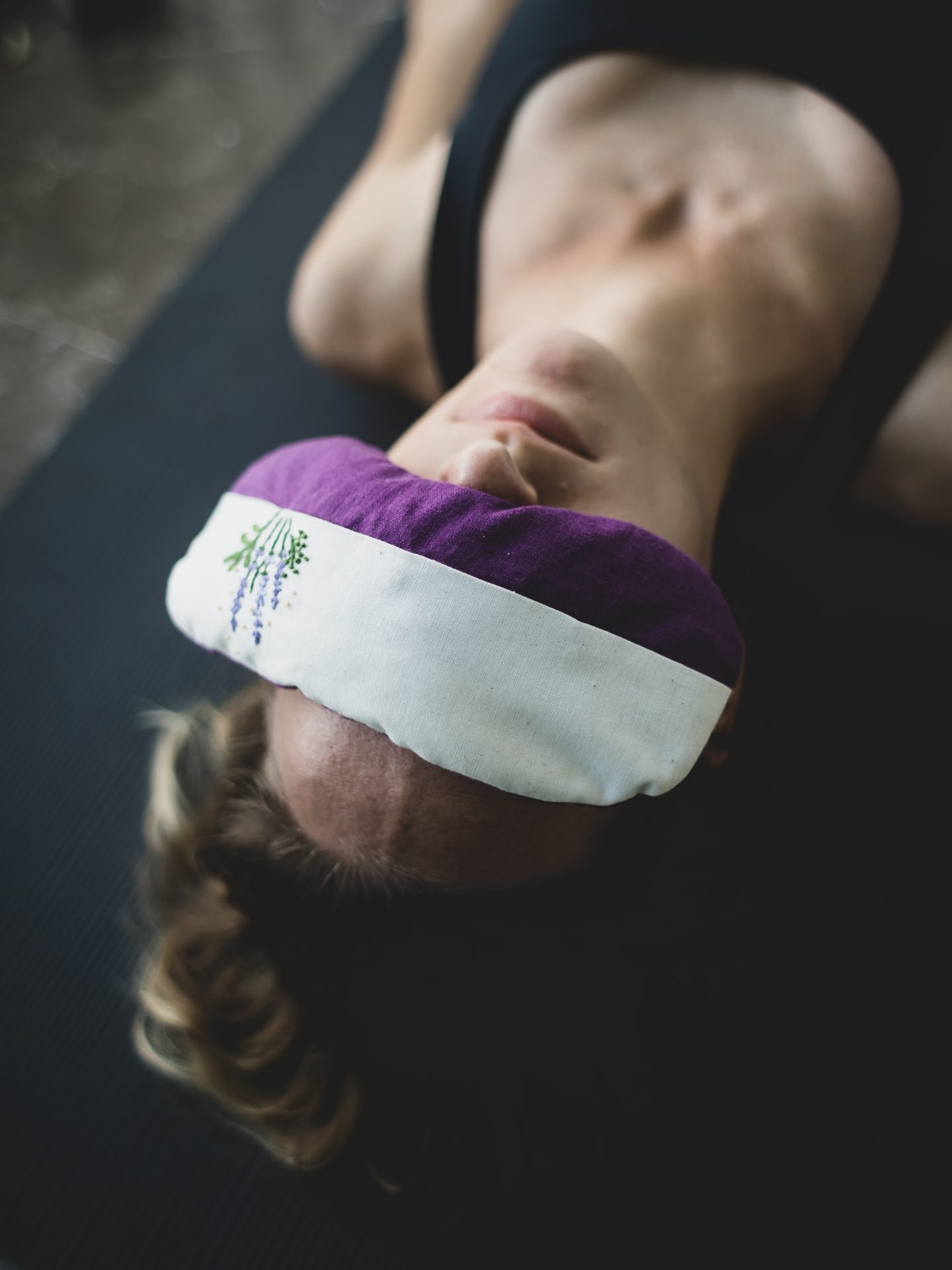The very legit reason yin yoga is so popular post-lockdown
Think yin yoga is just about lying down? Think again.
All I wanted to do when lockdown ended was get my hands on some kit. I wanted heavy weights, boxing bags, even reformer pilates machines that I’d never touched before. I wanted to get excited about working out by throwing myself into fancy studios and trying new classes.
That’s not to say I was totally ready to neglect the slower tempo of life I’d adopted over the past year and a half. But I wanted to feel like my body was doing something, rather than just going through the motions.
You may also like
Exercise recovery: ”how lockdown taught me to rest listen to my body”
I thought everyone had the same mindset as me. But then friends told me they weren’t planning on going back to the gym after realising that they preferred less-pressurised home workouts. Stats from boutique studio Blok also prove that slower practices are more popular than ever: it’s most-booked class since gyms re-opened was yin yoga – the most still of all practices.
I was baffled. “Why are people paying to just… lie down?” I asked my editor Miranda. I couldn’t understand why people would be itching for a slow, passive stretch after a year away from IRL sessions. Couldn’t they just do that at home? “There’s so much more to yin than just lying,” Miranda, a yin fan, proclaimed.
What are the benefits of Yin yoga?
Yin yoga is a restorative, rather than an active, practice. “It draws from a Traditional Chinese Medicine and Eastern Philosophy framework to tap into neglected areas of your body through meditation and long supportive holds,” according to yoga instructor Claudia Mirallegro. “The focus on holding poses targets the connective tissues of the body; ligaments, tendons and fascia to enhance circulation, increase joint mobilisation and clear energetic blockages to heal the body.”
So far, sounds pretty much all about lying down. But, the stillness of the practice is about more than your body, Claudia tells me. “Anchoring in the present moment through yin yoga and mediation has truly transformed my mind,” she says. In fact, everyone I speak to about yin tells me it is the most holistic approach to healing – focusing on healing both the body and the mind.
In a 2018 study from Sweden, five weeks of yin yoga resulted in significant reductions in adrenomedullin levels (a biomarker for cardiovascular health) as well as an improvement in anxiety and sleep.
You may also like
Yoga benefits: all the ways that yoga can improve your mental health
Just the name shows how it is designed as the antidote to our every day life. Miranda explains to me that the go-go-go of work, gym and socialising that I have inevitably fallen back into it (or never really stopped?) is the ‘yang’. It’s the active, dynamic movements of life. Yin is about restoring the body and mind by going slow.
This is why Claudia thinks it’s so popular post-lockdown. “This past year initiated feelings of turmoil and anxiety. Now more than ever, we recognise the importance of mental health,” she says. “Life never slows down but continues to accelerate even during a pandemic. Yin Yoga gives us permission to relax our expectations, surrender control and to remember that a human being that is well rested can accomplish much more than a weary one.”

What happens in a Yin yoga class?
To understand yin, I head to a Blok class myself. The mat is accompanied with blocks, bolsters and even a blanket, the latter of which I’ve definitely never come across in a dynamic yoga session.
My instructor, Francesca, begins with some deep breathing while lying on the mat. Then we move through lying and seated poses (no standing here, thank you). In an hours class, I count about five different poses. At each point in the session, Francesca tells us we can ignore her instruction. That if we want we can simply take the blanket and lie or take a child’s pose rather than force our body into postures.
It’s different to anything else I’ve done before, where the longest you’d hold a stretch would be 30 seconds in a pigeon. During the holds, I find my mind starts to wander for the first few minutes, losing myself in something stupid I said last time I was socialising or the work email I didn’t reply to. But then, as I held for longer, something happened: the stretching sensation in my shoulders or hips felt so intense that I had no choice but to focus on the release. My mind is suddenly not distracted. I feel, for the first time in a long time, quite present in my body.
It’s worth noting that while yin is about relaxation, it’s not all airy fairy. It hurts, and it hurts a lot. Holding a deep hip opener for five minutes is never going to be comfortable, but it was bordering on agony at times. Yet, in the same way that strength training hurts in a satisfying way, it felt like an achievement to sit in the pain rather than give up.
I wouldn’t say that I am a transformed yogi, or that the halo of relaxation lasted longer than my bus journey home. But the class made me think about how much I truly prioritise the art of doing nothing. While I believe in the power of rest days and getting a good night’s sleep, I’m bad at going slow without feeling fidgety. Pushing past my need to let my body and brain run at 100mph was quite a satisfying feeling, and one I know I should surrender to more often. Turns out I might book in for a yin class again.
For more stretching techniques, visit the How To library on the Strong Women Training Club.
Images: Getty / Unsplash
Source: Read Full Article
